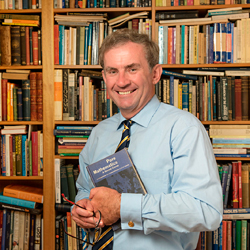Einstein and the Atomic Bomb
/One of the greatest misconceptions in Science is that Einstein was the "father of the atomic bomb" or "the father of the nuclear age". As the NSW HSC Physics syllabus has the Option "Quanta to Quarks" where questions are asked on the Manhattan Project, students' answers sometimes wander into areas where Einstein is connected with the atomic bomb. What is this misconception based on? Einstein's famous equation
E = mc2
is taught in Physics classes using problems involving nuclear power and so the mindset is formed that Einstein was the father of the nuclear age. This equation could equally be applied to calculate the loss in mass of a hot plate of food as it cools. Nowhere in Einstein's early papers is there mention of uranium or any technological application of it. Einstein stated that if a body gives off an energy L in he form of light its mass decreases by an amount L/c2. This equation applies to any object and could be applied to wood or water. In 1907 Einstein stated his famous equation E=mc2 giving the equivalence of mass and energy and it was not until 1932 that Cockcroft and Walton obtained the first experimental verification of it in a nuclear reaction. In 1939 Einstein feared that Germany may come into possession of nuclear weapons and at the instigation of many of the physicists who had left Europe he signed a letter to President Roosevelt warning of the possibility of a nuclear weapon and German interest in this area. Einstein's signing of this letter is sometimes interpreted as indicating that Einstein was involved in this research himself. Einstein had no connection with the atomic bomb project other than signing the letter. When it was later found that Germany did not make progress in nuclear research Einstein regretted signing the letter and stated "had I known that fear was not justified I would have not participated in opening this Pandora's box"
